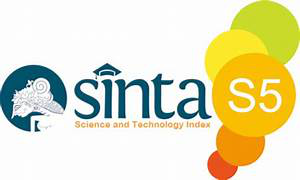Jaringan Komunikasi Anak Jalanan Berkaitan dengan Diterapkannya Sistem Satu Arah di Kota Bogor
Abstract
Abstract
This research is a qualitative descriptive study that aims to determine the communication network of street children in connection with the implementation of a one-way system in the city of Bogor. It also finds out whether street children are one of the inhibiting factors in implementing a one-way system in the city of Bogor. The communication network described in this study is the structure of the wheeled communication network, the chain communication structure, the communication structure of the Y communication network, the circle network structure, and the communication network structure of all channels. Data sources used in this study are key informants, informants, events and activities, and literature related to group communication and communication networks. The sampling technique in this study was purposive sampling which was considered to know accurate information in response to the research problem formulation. Data collection techniques using in-depth interviews and observation techniques, while data analysis techniques used using interactive analysis models include: collection, data reduction, data interpretation, and drawing conclusions after verification. Based on the results of the study, communication networks are used by groups of children in the street that became the informant in this study. The first informants were from Tugu Kujang with chain communication network structure. The informants with wheel communication network structure are from Taman Topi, Lodaya, and Bantar Kemang. Street children are not directly inhibiting factors for the implementation of a one-way system in the city of Bogor, yet impeding aesthetics and the order of the city. The government conducts periodic training and provides a Work Training Center on a regular basis and provides Job Training Centers to reduce the growth rate of street children in Bogor city.
Keywords: anak travel bogor, bogor city, communication network one-way system
References
DAFTAR PUSTAKA
Arifin, Anwar. 1994. Strategi Komunikasi, Sebuah Pengantar Ringkas, CV Armico.Bandung.
Cangara, H. 2008. Pengantar Ilmu Komunikasi. PT Raja Grafindo Persada.Jakarta.
Devito, A.Joseph.1997.Komunikasi Antar Manusia. Profesional Books. Jakarta.
Efendy, Onong Uchjana.2006. Ilmu Komunikasi Teori dan Praktek. PT Remaja Rosdakarya. Bandung.
Mulyana. 2005. Ilmu Komunikasi (Sekarang dan Tantangan Masa Depan). Kencana. Jakarta.
Muslim. 2012. Komunikasi Persuasi. Bogor.
Suprapto, Tommy. 2009. Pengantar Teori dan Manajemen Komunikasi. PT . Buku Kita. Jakarta.
Moleong, Lexy. 2007. Metodologi Penelitian Kualitatif. PT. Remaja Rosdakarya. Bandung.
Sutopo, H.B . 2002 . Metodologi Penelitian Kualitatif. Sebelas Maret University Press. Surakarta.
Sumber dari Skripsi
Fatma, Amalia. 2015. Jaringan Sosial Anak Jalanan di Terminal Purabaya, Kecamatan Waru, Kabupaten Siduarjo.â€Skripsi Program Sarjana, Universitas Negeri Surabaya. Surabaya.
Rahmat, Basuki. 2012. Pola Komunikasi Komunitas Punk di Surakarta†Skripsi Program Sarjana, Universitas Sebelas Maret. Surakarta.
Sumber Dari Jurnal
Bahri, Samsul. 2015. Strategi Komunikasi Dinas Kesejahteraan Sosial dalam Menangani Penyandang Masalah Kesejahteraan Sosial di Kota Samarinda†Jurnal Ilmu Komunikasi vol 3. Universitas Mulawaman Samarinda.
Firdaus, D.R.S. 2012. Pendidikan Public Speaking sebagai Pengasah Kecerdasan Anak dan Remaja. Jurnal Wahana, vol.1 no.8, 2012. ISSN.0853-5876
Firdaus, D.R.S. 2013. Parents Characteristics and Communication Pattern that Shape the Attitude of Troubled Teens in Addressing Student Brawl. 17th International Conference on Communication and Media Studies, Istanbul Turkey, 29-30 July 2015.
DOI: 10.33751/jpsik.v3i2.1295
Refbacks
- There are currently no refbacks.












